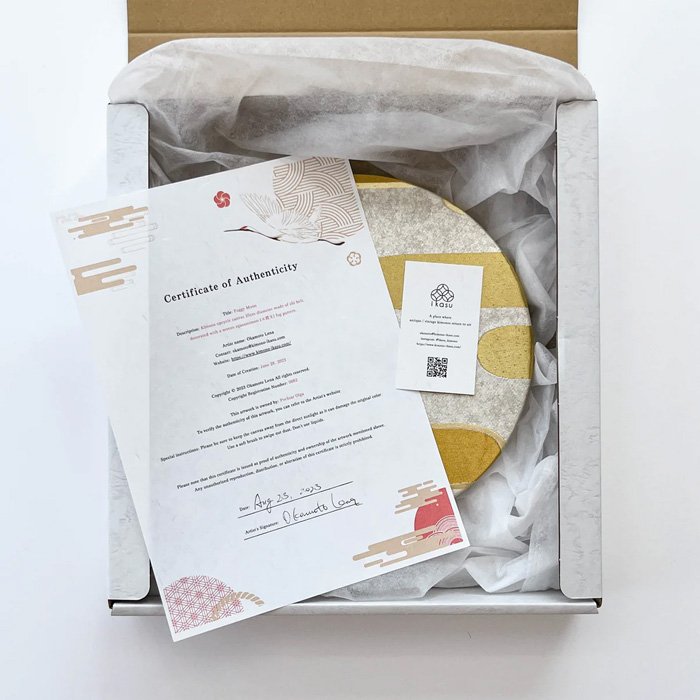Growth ~Enigma~ (set)
Size
approx. 60cm x 20cm x 4cm (2 items)
Materials
silk (outside-layer) , wooden frame, cotton linen canvas (under-layer)
About this canvas
This set of canvases showcases a vertical Ekasumi haze pattern, showing a contemporary and artistic composition.
Size
approx. 60cm x 20cm x 4cm (2 items)
Materials
silk (outside-layer) , wooden frame, cotton linen canvas (under-layer)
About this canvas
This set of canvases showcases a vertical Ekasumi haze pattern, showing a contemporary and artistic composition.
Size
approx. 60cm x 20cm x 4cm (2 items)
Materials
silk (outside-layer) , wooden frame, cotton linen canvas (under-layer)
About this canvas
This set of canvases showcases a vertical Ekasumi haze pattern, showing a contemporary and artistic composition.
Period / History
The obi used in these prints is from the late Showa period (1960-80s).
Explanation and meaning of patterns and colors
This obi is decorated with intricately beaten gold and silver. The "ekasumi" haze pattern is characterized by the design of the Japanese letter "e"(エ) within the haze pattern. within the haze pattern, often accompanied by auspicious motifs such as flowers, but elegant and simple in this particular obi.
Haze patterns are rooted in the concept of "haze," which lacks a definite shape and is represented by layering several straight lines horizontally. This technique has been widely used in art and painting throughout history. Haze patterns are used to convey perspective and the passage of time, symbolizing "eternity" in the sense that they appear and disappear.
This upcycled obi features a simple yet contemporary interpretation of the haze pattern, enhanced by the deep and elegant presence of beaten gold and silver.
Characteristics of the fabric
The beaten gold used in this design is created by thinly stretching gold or silver foil, applying lacquer, and then attaching it to a narrow strip of Japanese paper that matches the width of the obi. These strips are cut into extremely thin pieces, each less than a millimeter wide.
This weaving technique, known as "hikihaku," involves weaving ultra-thin foil into the weft of nishijin brocade and karaori brocade. By incorporating the foil into the ground weave of the fabric, a subtle and refined gold or silver appearance is achieved without appearing overly gilded.
Decoration Tips
Canvas can be displayed on a table, wall, etc. Hanging on a wall requires hooks, tacks or nails. It can also be displayed propped up on an easel. Ideal for a room makeover, housewarming gift, gift or souvenir for a loved one.
Caution
All pieces are made from real kimonos, antiques and vintage pieces. For this reason, the fabric may have traces of long-term use and minor fabric damage. If there are scratches or stains, we always add a photo of the area on the item page, so please check before you buy. Regarding precaution, cancellation and refund policy, please refer to the refund policy in the footer section of the site for information.
The last images in the gallery are the images of the back of the canvas, the mounts and the packaging.























